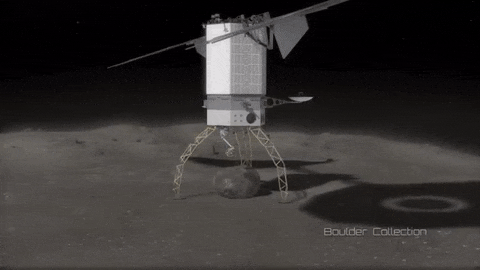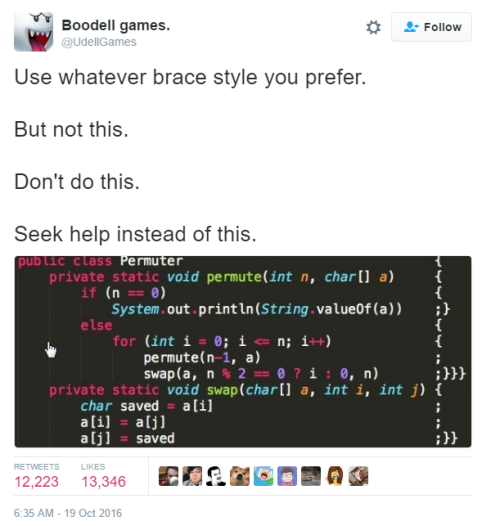Mission Possible: Redirecting An Asteroid
Mission Possible: Redirecting an Asteroid
As part of our Asteroid Redirect Mission (ARM), we plan to send a robotic spacecraft to an asteroid tens of millions of miles away from Earth, capture a multi-ton boulder and bring it to an orbit near the moon for future crew exploration.

This mission to visit a large near-Earth asteroid is part of our plan to advance the new technologies and spaceflight experience needed for a human mission to the Martian system in the 2030s.
How exactly will it work?
The robotic spacecraft, powered by the most advanced solar electric propulsion system, will travel for about 18 months to the target asteroid.

After the spacecraft arrives and the multi-ton boulder is collected from the surface, the spacecraft will hover near the asteroid to create a gravitational attraction that will slightly change the asteroid’s trajectory.

After the enhanced gravity tractor demonstration is compete, the robotic vehicle will deliver the boulder into a stable orbit near the moon. During the transit, the boulder will be further imaged and studied by the spacecraft.

Astronauts aboard the Orion spacecraft will launch on the Space Launch System rocket to explore the returned boulder.

Orion will dock with the robotic vehicle that still has the boulder in its grasp.

While docked, two crew members on spacewalks will explore the boulder and collect samples to bring back to Earth for further study.

The astronauts and collected samples will return to Earth in the Orion spacecraft.
How will ARM help us send humans to Mars in the 2030s?

This mission will demonstrate future Mars-level exploration missions closer to home and will fly a mission with technologies and real life operational constraints that we’ll encounter on the way to the Red Planet. A few of the capabilities it will help us test include:
Solar Electric Propulsion – Using advanced Solar Electric Propulsion (SEP) technologies is an important part of future missions to send larger payloads into deep space and to the Mars system. Unlike chemical propulsion, which uses combustion and a nozzle to generate thrust, SEP uses electricity from solar arrays to create electromagnetic fields to accelerate and expel charged atoms (ions) to create a very low thrust with a very efficient use of propellant.
Trajectory and Navigation – When we move the massive asteroid boulder using low-thrust propulsion and leveraging the gravity fields of Earth and the moon, we’ll validate critical technologies for the future Mars missions.
Advances in Spacesuits – Spacesuits designed to operate in deep space and for the Mars surface will require upgrades to the portable life support system (PLSS). We are working on advanced PLSS that will protect astronauts on Mars or in deep space by improving carbon dioxide removal, humidity control and oxygen regulation. We are also improving mobility by evaluating advances in gloves to improve thermal capacity and dexterity.
Sample Collection and Containment Techniques – This experience will help us prepare to return samples from Mars through the development of new techniques for safe sample collection and containment. These techniques will ensure that humans do not contaminate the samples with microbes from Earth, while protecting our planet from any potential hazards in the samples that are returned.
Rendezvous and Docking Capabilities – Future human missions to Mars will require new capabilities to rendezvous and dock spacecraft in deep space. We will advance the current system we’ve developed with the international partners aboard the International Space Station.
Moving from spaceflight a couple hundred miles off Earth to the proving ground environment (40,000 miles beyond the moon) will allow us to start accumulating experience farther than humans have ever traveled in space.
Make sure to follow us on Tumblr for your regular dose of space: http://nasa.tumblr.com
More Posts from Stubborn-turtle-blog and Others

Horsehead Nebula // Barnard 33
I think it's Java? Just really, really bad Java

How is the source for this returnofkings, a MRA site?
If men stopped working…the world would continue on.
If women stopped working, then things would get ugly.

One of the Huffington Post's article on the GOP convention included this at the end.
The wood siding could age badly unless it's well-treated, but otherwise cool.
Not a fan of the color scheme, but those chandeliers have such an awesome structure








Inspiration: Black Living Room
Squishy physics!
How physicists see other fields:
Biology: squishy physics
Geology: slow physics
Computer Science: virtual physics
Psychology: people physics
Chemistry: impure physics
Math: physics without units
I feel like this belongs in a more futuristic animated movie






Bolles + Wilson. Suzuki House. Tokyo. Japan. photos/ drawing: Ryuji Miyamoto/ Bolles + Wilson. - architecture classic
The Sciences, in Brief
Geology: lick the rock
Psychology: brainception
Genetics: Punett squares and percentages
Chemistry: what is water?
Biology: no math for the love of God
Physics: 1001 ways to throw things
Astronomy: the nerds of the science world
-
 joselinkpr liked this · 4 years ago
joselinkpr liked this · 4 years ago -
 radio-ramblings liked this · 6 years ago
radio-ramblings liked this · 6 years ago -
 solarfunk reblogged this · 6 years ago
solarfunk reblogged this · 6 years ago -
 ghoulish-activist-gay liked this · 6 years ago
ghoulish-activist-gay liked this · 6 years ago -
 bekinditschaos liked this · 6 years ago
bekinditschaos liked this · 6 years ago -
 solarpunkbaby reblogged this · 6 years ago
solarpunkbaby reblogged this · 6 years ago -
 solarpunkbaby liked this · 6 years ago
solarpunkbaby liked this · 6 years ago -
 alchemystik reblogged this · 7 years ago
alchemystik reblogged this · 7 years ago -
 gilapls reblogged this · 7 years ago
gilapls reblogged this · 7 years ago -
 bagwis reblogged this · 8 years ago
bagwis reblogged this · 8 years ago -
 intervencion liked this · 8 years ago
intervencion liked this · 8 years ago -
 best-hotels-posts reblogged this · 8 years ago
best-hotels-posts reblogged this · 8 years ago -
 sparrose liked this · 8 years ago
sparrose liked this · 8 years ago -
 the-girl-with-the-fandom-tattoos reblogged this · 8 years ago
the-girl-with-the-fandom-tattoos reblogged this · 8 years ago -
 earthbending-sjw liked this · 8 years ago
earthbending-sjw liked this · 8 years ago -
 vansgalaxia-blog liked this · 8 years ago
vansgalaxia-blog liked this · 8 years ago -
 rwbwby liked this · 8 years ago
rwbwby liked this · 8 years ago -
 thingsmydadmightlike-blog reblogged this · 8 years ago
thingsmydadmightlike-blog reblogged this · 8 years ago -
 instantlyvirtualstudent-fan liked this · 8 years ago
instantlyvirtualstudent-fan liked this · 8 years ago -
 mcm-curiosity liked this · 8 years ago
mcm-curiosity liked this · 8 years ago -
 oniwoolf-blog liked this · 8 years ago
oniwoolf-blog liked this · 8 years ago -
 shadowsoftomorrow reblogged this · 8 years ago
shadowsoftomorrow reblogged this · 8 years ago -
 ringreafhacklever-blog liked this · 8 years ago
ringreafhacklever-blog liked this · 8 years ago -
 itsfoodlovex-blog liked this · 8 years ago
itsfoodlovex-blog liked this · 8 years ago -
 raversfantasyrf liked this · 8 years ago
raversfantasyrf liked this · 8 years ago -
 ridesthighripsra-blog liked this · 8 years ago
ridesthighripsra-blog liked this · 8 years ago -
 minellia---tech-priestess reblogged this · 8 years ago
minellia---tech-priestess reblogged this · 8 years ago -
 minellia---tech-priestess liked this · 8 years ago
minellia---tech-priestess liked this · 8 years ago -
 jamesvpat liked this · 8 years ago
jamesvpat liked this · 8 years ago -
 tradatreseni-blog liked this · 8 years ago
tradatreseni-blog liked this · 8 years ago -
 sidcam liked this · 8 years ago
sidcam liked this · 8 years ago -
 multipurpose-rp liked this · 8 years ago
multipurpose-rp liked this · 8 years ago
Gaming, Science, History, Feminism, and all other manners of geekery. Also a lot of dance
243 posts
